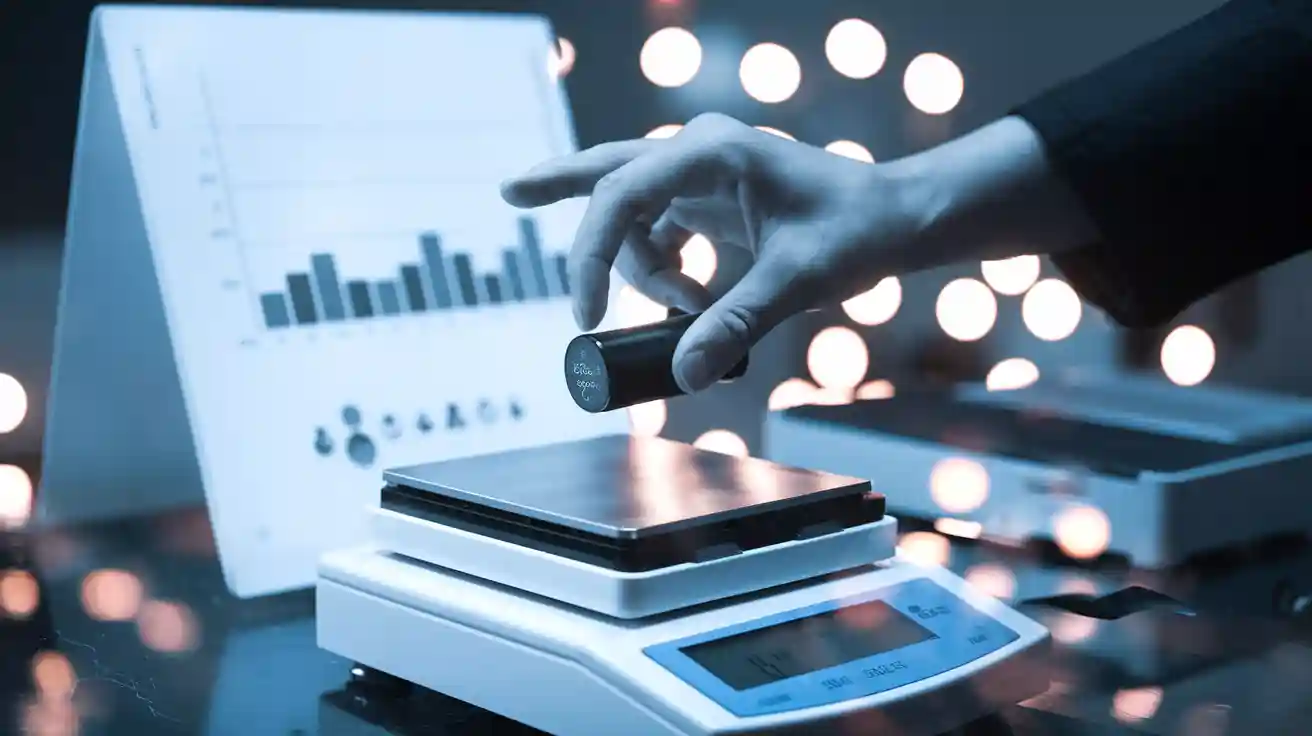
You will notice several factors impact li-ion batteries weight. These include chemistry, capacity, cell size, casing, and design. For example, a lithium battery with a metal casing weighs more than one with a plastic case. The type of chemistry changes lithium battery weight, too. Lithium Iron Phosphate batteries are heavier than Nickel Manganese Cobalt batteries. The size and capacity of the battery also play a big role in how much does a lithium battery weight.
The following table shows typical lithium-ion battery weight for common types and sizes:
| Akku-Typ | Capacity / Size | Weight Range |
|---|---|---|
| AA Lithium-Ion | AA size | 14.5 to 15 grams |
| High-Capacity Portable | ~10000mAh (10Ah) | 150 to 230 grams |
| EV Pack (Nissan Leaf) | 40 kWh | ~303 kg |
| EV Pack (Tesla Model S) | 85 kWh | ~540 kg |
You can see that battery weight depends on the chemistry and design. Knowing lithium-ion battery weight helps you choose the right battery for your needs.
Factors Affecting Li-Ion Batteries Weight
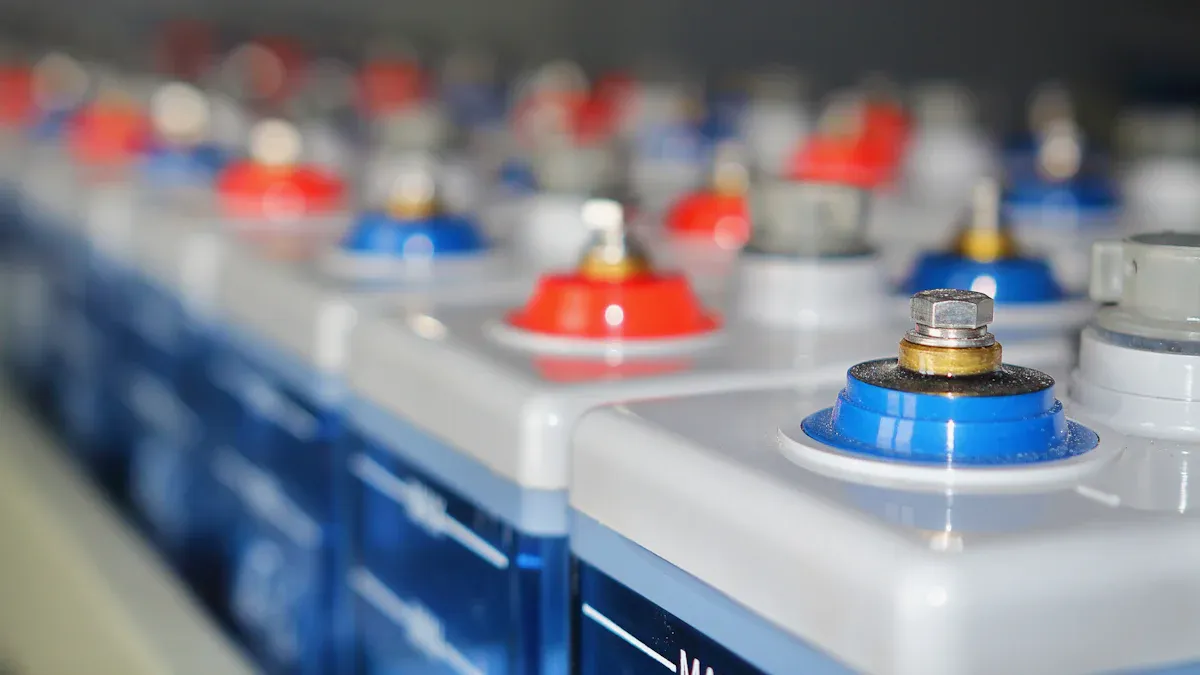
Chemie
You will find that chemistry is one of the biggest reasons for changes in li-ion batteries weight. The metals used in lithium-ion battery chemistry, such as aluminum, cobalt, copper, nickel, manganese, and iron, make up about half of the total mass. Different cathode materials, like lithium cobalt oxide or lithium iron phosphate, change the types and amounts of metals inside. Nickel can boost energy density, which means you get more capacity for less weight. Manganese and cobalt help with safety and stability, but they also add to the mass. The chemistry you choose will decide the lithium battery weight and its performance.
Kapazität
Battery capacity tells you how much energy a lithium battery can store. Higher battery capacity means more active material inside, which increases both the mass and the weight. If you want a battery with more capacity, you will need to accept a heavier lithium battery weight. Energy density is important here. A battery with high energy density can store more energy without a big jump in weight. You should always check both battery capacity and energy density when comparing li-ion batteries weight.
Cell Size
Cell size affects both the lithium battery weight and the total capacity. Larger cells, like the 21700, hold more energy and weigh more than smaller ones, such as the 18650. The table below shows how size changes weight and capacity:
| Merkmal | 18650 Cell | 21700 Cell |
|---|---|---|
| Dimensions | 18 mm x 65 mm | 21 mm x 70 mm |
| Maximum Capacity | Up to 3,500 mAh | Up to 5,000 mAh |
| Energy Density | Unter | Höher |
| Weight | Lighter | Heavier |
When you pick a bigger cell, you get more capacity, but you also increase the total lithium-ion battery weight.
Gehäuse
The casing protects the lithium battery, but it also adds to the weight. Most lithium-ion battery casings use nickel-coated steel, which can make up over 25% of the cell mass. This part does not help with capacity. Some batteries use aluminum casings, which are much lighter and can boost energy density by over 25%. If you want to lower lithium battery weight, look for batteries with aluminum casings. The casing material and design play a big role in the final weight of your battery.
Gestaltung
Design choices, such as adding thermal management systems, also affect li-ion batteries weight. For example, thermal diffusion plates help keep the battery cool but only add a small amount to the total mass—about 2.6%. Other design features, like extra safety layers or special shapes, can also change the weight. You should consider these design details when you compare lithium battery weight for different uses.
Tip: Always check the chemistry, capacity, cell size, casing, and design when you want to understand or compare li-ion batteries weight. Each factor changes the weight and performance in its own way.
Relationship Between Capacity and Weight
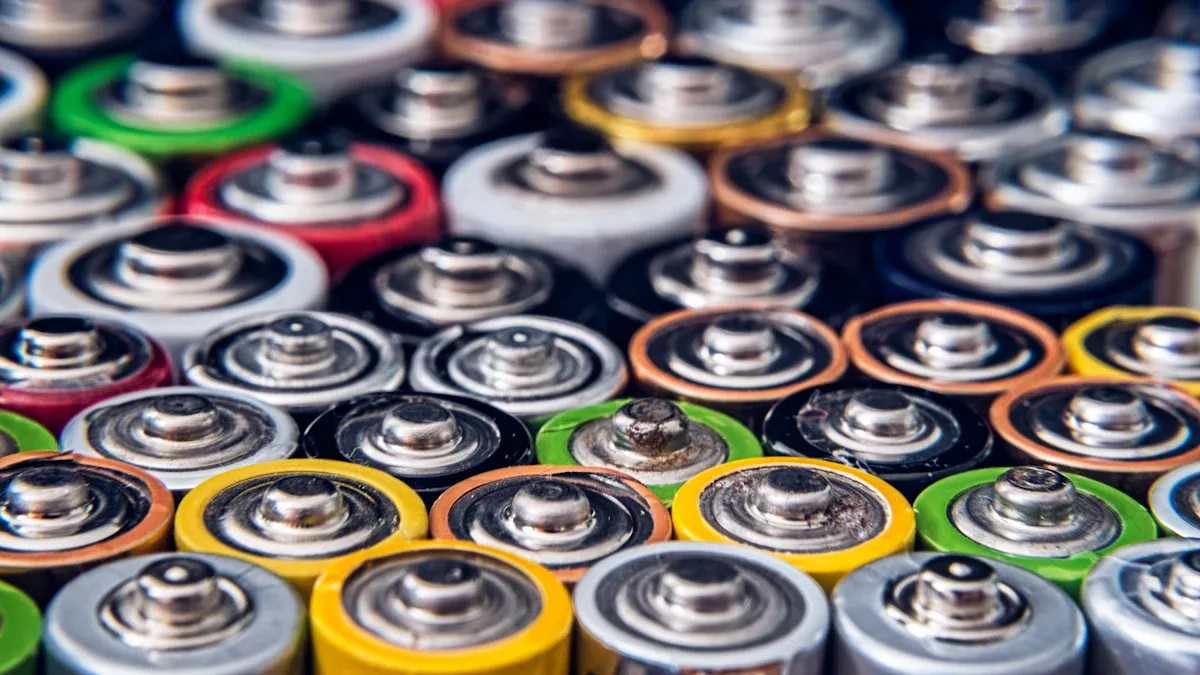
Energy Density
You need to understand how energy density connects battery capacity and weight. Energy density tells you how much energy a lithium-ion battery can store for each kilogram of mass. When you compare batteries, a higher energy density means you get more energy without adding extra weight. This is important for devices like phones, laptops, and electric vehicles.
- Lithium-ion batteries usually have energy densities between 100 and 265 Wh/kg.
- Lithium Iron Phosphate batteries have lower energy density, so they weigh more for the same capacity.
- Nickel Manganese Cobalt and Lithium Cobalt Oxide batteries have higher energy density, often between 150 and 220 Wh/kg. These batteries are lighter for the same amount of energy.
- Most lithium-ion batteries weigh about 6 to 8 kg for every kWh of capacity. This affects the total weight in things like electric cars.
If you choose a battery with high energy density, you can reduce the weight while keeping the same battery capacity. This relationship between capacity and weight helps you pick the right lithium battery for your needs.
Calculation Formula
You can use a simple formula to find the relationship between capacity and weight for any lithium-ion battery. The formula is:
Battery Weight (kg) = Battery Capacity (Wh) ÷ Energy Density (Wh/kg)
This formula lets you estimate how much a lithium battery will weigh if you know its battery capacity and energy density. For example, if you have a lithium-ion battery with a capacity of 2.5 Ah (at 3.7V), you first convert amp-hours to watt-hours:
- 2.5 Ah × 3.7 V = 9.25 Wh
If the energy density is 160 Wh/kg, you calculate the weight like this:
- 9.25 Wh ÷ 160 Wh/kg = 0.0578 kg (about 57.8 grams)
This shows the direct relationship between capacity and weight. If you increase the battery capacity, the weight goes up unless you also increase the energy density.
Note: The weight you calculate with this formula is for the cell only. A complete lithium-ion battery pack includes many cells plus extra parts like casing, separators, and cooling systems. These components add more mass and increase the total weight.
Here is a table to help you see the difference between a single cell and a full battery pack:
| Akku-Typ | Weight Range | Anmerkungen |
|---|---|---|
| Single AA Lithium-Ion Cell | 14.5 to 20 grams | Used in small electronics |
| High-Capacity Single Cell | 150 to 230 grams | Used in power banks and tablets |
| Electric Vehicle Battery Pack | 300 to 500 kilograms | Includes many cells and extra components |
| Weight per kWh (Battery Pack) | 6 to 8 kilograms per kWh | Total pack weight, not just cells |
You should always remember that the relationship between capacity and weight changes when you add more cells or extra parts. The total weight of a lithium-ion battery pack can be thousands of times more than a single cell because of these added materials.
Tip: When you compare lithium batteries, always check both the battery capacity and the energy density. This will help you understand the relationship between capacity and weight and choose the best battery for your project.
How to Calculate Battery Weight
You have several ways to find out the battery weight for a lithium-ion battery. Each method gives you a different level of accuracy and detail. You can check the manufacturer specs, use formulas, or physically weigh the battery. Make sure you include the casing and all other parts when you want the total weight.
Manufacturer Specs
The easiest way to know the battery weight is to check the manufacturer’s specification sheet. Most battery makers list the weight in the physical specifications section. You will also see other details like size and lead length. This information helps you plan for design and handling.
Here is an example of what you might find in a lithium-ion battery spec sheet:
| Parameter | Typical Value |
|---|---|
| Diameter | Approximately 74 mm |
| Length | Approximately 146 mm |
| Lead Length | Approximately 75 mm |
| Weight | 1152 grams (2.54 lb) |
You should always use the listed weight if you want the most accurate number. The manufacturer includes the casing and all built-in components in this value.
Tip: Always check the latest datasheet for your battery model. Manufacturers sometimes update the design, which can change the weight.
Using Formulas
If you do not have the spec sheet, you can estimate the battery weight using a simple formula. This method works well if you know the battery’s capacity and energy density.
Follow these steps:
- Find the battery capacity in ampere-hours (Ah) from the label or datasheet.
- Calculate the energy in watt-hours (Wh) using the formula:
Energy (Wh) = Voltage (V) × Capacity (Ah) - For example, if you have a 3.7V battery with 10Ah capacity:
Energy = 3.7V × 10Ah = 37Wh - Find the energy density of your battery type (for example, 160 Wh/kg).
- Use the formula:
Battery Weight (kg) = Energy (Wh) ÷ Energy Density (Wh/kg) - In this example:
Battery Weight = 37Wh ÷ 160Wh/kg = 0.231 kg (231 grams)
This formula gives you the weight of the cell only. If you want the total battery weight, add the mass of the casing and any extra parts. Real-world weight may be a bit higher because of these extra materials.
Note: The formula gives you a good estimate, but always check for extra components like cooling plates or connectors. These can add to the total weight.
Physical Weighing
You can also measure the battery weight directly with a scale. This method gives you the most accurate result, especially if you have a custom battery pack or a used battery.
Here is how you can do it:
- Use a digital kitchen scale or a postal scale for small batteries.
- Place the entire battery, including the casing and wires, on the scale.
- Record the weight shown on the display.
If you have a large battery pack, use a bathroom scale. Weigh yourself first, then weigh yourself holding the battery. Subtract your own weight to get the battery weight.
Tip: Always weigh the full battery, not just the cells. The casing, connectors, and safety features all add to the total weight.
You should use the method that fits your needs. Checking the manufacturer specs is fast and easy. Using formulas helps if you only know the battery’s capacity and voltage. Physical weighing works best for custom or unknown batteries. Always remember to include every part of the battery when you want the true battery weight.
How Much Does a Lithium Battery Weigh
Common Cell Types
You will find that lithium batteries come in many shapes and sizes. The most common types include AA lithium-ion, 18650, and 21700 cells. Each type has a different lithium battery weight because of its size, chemistry, and design. For example, an AA lithium-ion battery usually weighs about 14.5 to 20 grams. The 18650 cell, which you often see in laptops and flashlights, weighs around 45 to 50 grams. The larger 21700 cell, used in electric vehicles, weighs about 68 to 75 grams.
The chemistry inside the battery also changes the weight. NMC (Nickel Manganese Cobalt) and LCO (Lithium Cobalt Oxide) batteries have high energy density, so they are lighter for the same capacity. LFP (Lithium Iron Phosphate) batteries are heavier because they have lower energy density, but they are safer and last longer. You can see this difference in the chart below:
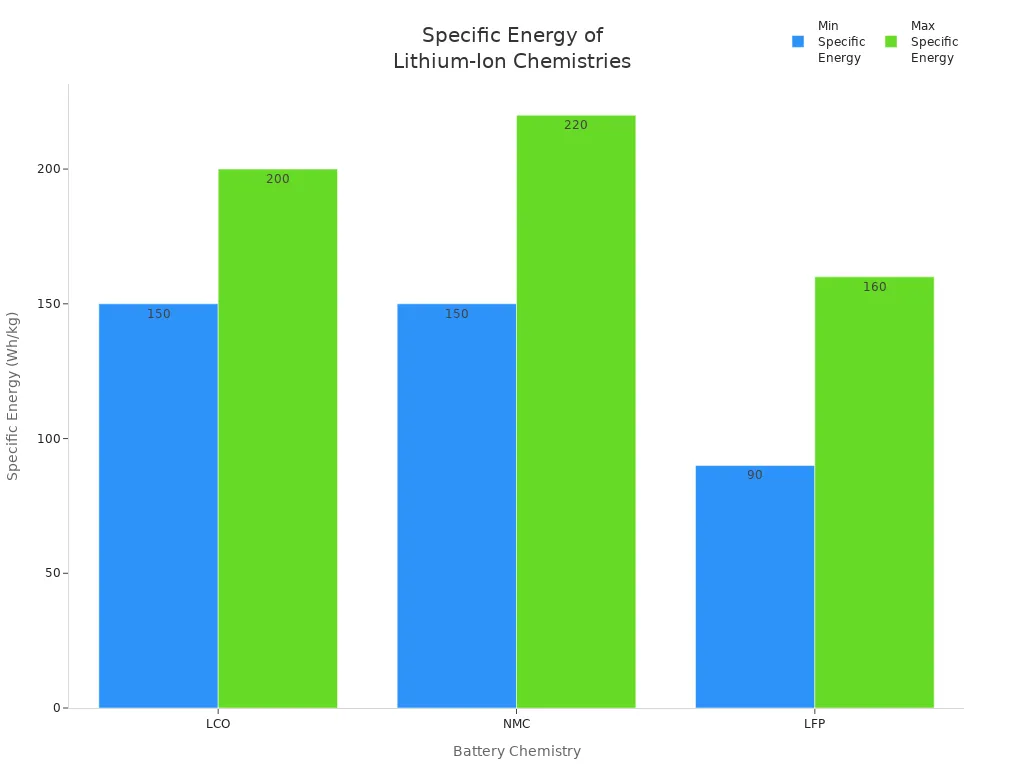
Note: NMC and LCO batteries are lighter than LFP for the same amount of energy. LFP batteries are heavier but offer better safety.
Comparison Table
You can use the table below to compare lithium battery weight for different types and chemistries. This table shows how much does a lithium battery weight for common sizes and applications:
| Battery Type / Size | Approximate Weight | Key Characteristics / Notes |
|---|---|---|
| AA Lithium-Ion Battery | ~14.5 to 20 grams | Lightweight, used in small devices |
| 18650 Cell (NMC) | ~45 to 50 grams | High energy density, common in laptops and flashlights |
| 21700 Cell (NMC) | ~68 to 75 grams | Used in electric vehicles, higher capacity |
| 10000mAh High-Capacity Battery | ~150 to 200 grams | Used in power banks and tablets |
| Lithium-Ion Battery per kWh | 6 to 8 kg per kWh | Varies by chemistry and design |
| EV Battery Pack (64 kWh) | ~457 kg | Large packs for electric vehicles |
| Lead-Acid Battery per kWh | ~25 kg per kWh | Much heavier than lithium-ion, less energy dense |
| LFP Battery | Heavier than NMC for same capacity | More stable, longer cycle life, but higher weight |
| NMC Battery | Lighter than LFP for same capacity | Higher energy density, better weight-to-energy ratio |
You can see that lithium battery weight depends on the type, size, and chemistry. Lithium-ion batteries are much lighter than lead-acid or nickel-metal hydride batteries for the same energy. NMC batteries give you the lightest option for high capacity. LFP batteries weigh more but offer extra safety.
Key takeaway: When you choose a battery, always check the lithium battery weight, chemistry, and size. This helps you pick the best battery for your device or project.
Choosing by Battery Weight
Selection Tips
When you want to know how to choose a suitable lithium battery, you need to look at more than just the price. You should always check the weight first, especially if you need lightweight lithium batteries for portable electronics, drones, or electric vehicles. Lightweight batteries help you carry devices longer and make drones fly higher. For electric vehicles, a lightweight battery pack means more range and better handling.
Here are some tips to help you pick the right battery:
- Match the battery weight to your device’s needs. Drones and UAVs need lightweight lithium batteries to stay in the air longer. Electric vehicles need lightweight battery packs for better efficiency.
- Check the Energiedichte. Lightweight lithium batteries with high energy density give you more power without extra weight.
- Look at battery capacity. Higher battery capacity means more energy, but it can also add weight. Find the balance that fits your device.
- Think about cycle life. Lightweight batteries with longer cycle life last longer and save money over time.
- Always choose batteries from trusted brands. Good brands make lightweight lithium batteries that are safe and reliable.
Tip: Lightweight lithium batteries with built-in safety features protect your devices and keep you safe.
Balancing Weight and Performance
You will often face trade-offs when you want lightweight lithium batteries. Reducing weight can lower battery capacity, which may limit how long your device runs. For drones, a lightweight battery helps with flight time, but too little capacity means shorter flights. Electric vehicles need lightweight batteries for speed and range, but you must not sacrifice battery capacity or safety.
Here is a table to help you see the main trade-offs:
| Aspekt | Lightweight Benefit | Possible Drawback |
|---|---|---|
| Weight | Easier to carry or install | May reduce battery capacity |
| Kapazität | More energy for longer use | Higher capacity can increase weight |
| Performance | Better speed and range | Lightweight batteries may heat up faster |
| Sicherheit | Safer designs reduce risk | Lightweight designs need strong protection |
Recent advances help you get lightweight lithium batteries without losing safety or performance. New cell designs, like Tesla’s 4680, boost energy density and cut weight. Solid-state batteries use lighter materials and offer better safety. AI-powered systems help manage lightweight battery packs for longer life.
When you want to know how to choose a suitable lithium battery, always balance weight, battery capacity, and performance. Lightweight batteries work best when you match them to your device’s needs, whether for drones, electric vehicles, or portable gadgets.
You have learned that lithium-ion battery weight depends on chemistry, cell size, casing, and design. The key to a lightweight battery is hohe Energiedichte, which lets you store more energy without extra weight.
- Lightweight batteries improve performance in electric vehicles and portable devices.
- Accurate measurement ensures your device stays safe and efficient.
- Always check the tables and use the formulas to compare lightweight options.
- For lightweight and high power, NCM batteries work best.
- Choose LiFePO4 for safety, even if it is less lightweight.
- Lightweight batteries make your devices easier to carry and use.
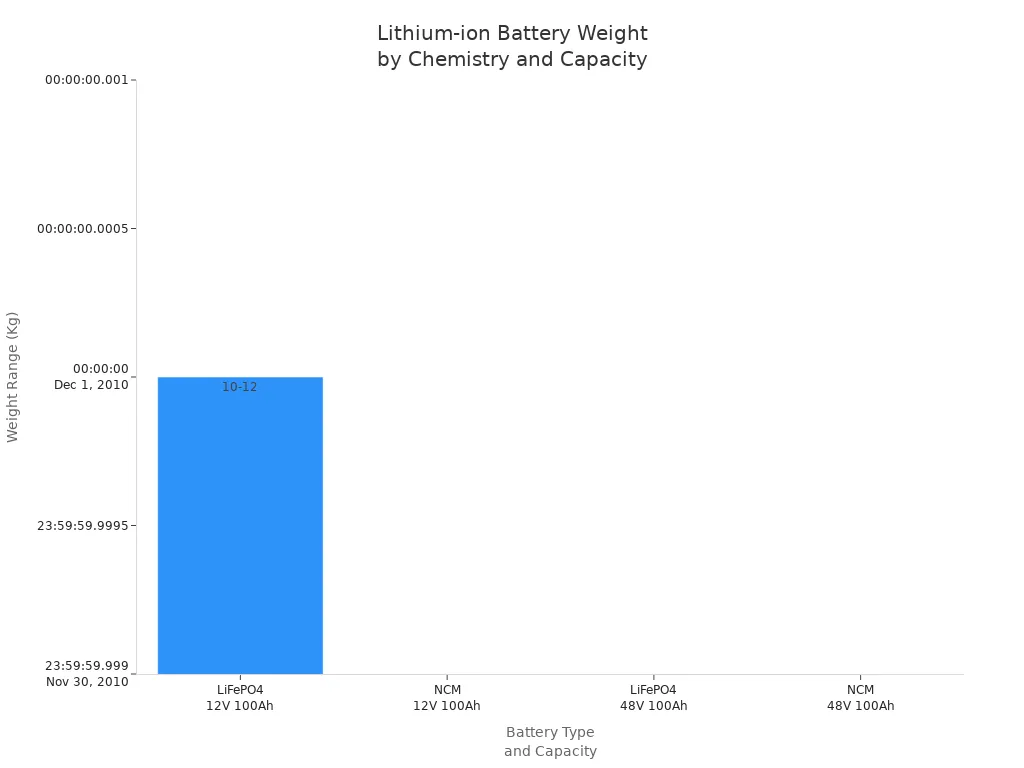
Tip: Use the provided tables and formulas to find the best lightweight battery for your needs.
FAQ
How do you find the weight of a lithium-ion battery if there is no label?
You can use a digital scale to weigh the battery. Place the battery on the scale and read the number. This method gives you the most accurate result if you do not have a label or datasheet.
Does higher battery capacity always mean more weight?
Usually, yes. A battery with higher capacity contains more active material, so it weighs more. However, batteries with higher energy density can store more energy without a big increase in weight.
Why do some lithium batteries feel heavier than others of the same size?
Different chemistries and casing materials change the weight. For example, lithium iron phosphate batteries weigh more than nickel manganese cobalt batteries, even if they look the same size.
Can you reduce battery weight without losing performance?
You can choose batteries with higher energy density or lighter casing materials. Some new designs use advanced materials to lower weight while keeping good performance. Always check the specs before you buy.

